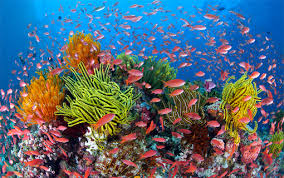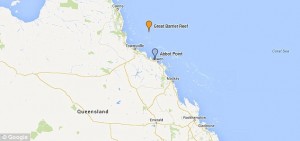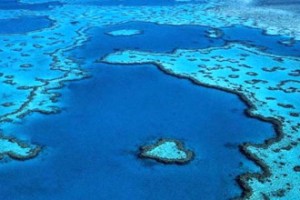Coal and Business as Usual: Destroying the World’s Seventh Wonder
Feb 6th, 2014 | By admin | Category: Energy and Carbon EmissionsBy Suzanne York, www.howmany.org
It is the largest coral reef ecosystem on earth and one of the seven wonders of the natural world, but that isn’t enough to stop an effort to continue down the road of dirty fossil fuel energy.
Last week, the Great Barrier Reef Marine Park Authority (GBRMA) in Australia approved a permit for a state-owned coal terminal operator to dump as much as 3 million cubic meters of dredged mud and sediment inside the park.
In December 2013, the Australian government signed off on the expansion of a coal port at Abbot Point in Northern Queensland. But public outrage led the GBRMA to delay a month whether to grant permits to dump the dredge spoil in the Great Barrier Reef Marine Park. Abbot Point would be one of the world’s largest coal ports, exporting 300 million tons annually.Australia is the world’s second-largest exporter of coal (Indonesia recently took over the top spot). The project will also create a coal-shipping highway directly through the Great Barrier Reef (GBR) for thousands of ships to export coal to Asia (mainly India).
The GBR is listed by UNESCO as a World Heritage site, and last year the agency expressed concern about the type of development taking place by the reef and considered listing it as “in-danger.” Despite that, Queensland Premier Campbell Newman told the Associated Press that his government would protect the environment, but not at the expense of the state’s economy.
What’s at Stake?
The reef is a living ecosystem and home to some 600 types of soft and hard coral, 1625 species of fish, as well as 133 varieties of sharks and rays.
The GBRMA itself notes that “conserving the reef’s biodiversity is not just desirable – it is essential. By protecting biodiversity, we are protecting our future and our children’s future.” How a coal port fits into environmental protection is difficult to conceive.
The organization also highlights on its website the value of the GBR:
- is the world’s largest coral reef ecosystem, extending over 14º of latitudinal range;
- includes over 2900 separate coral reefs;
- is made up of 70 ‘bioregions’ (broad-scale habitats) comprising 30 reef bioregions and 40 non-reefal bioregions;
- has over 2000km of mangroves, with species representing 54 per cent of the world’s mangrove diversity;
- includes about 900 islands ranging from small coral cays to large continental islands.
Michelle Maloney, a lawyer with the Australian Earth Laws Alliance, noted recently that Australia has the highest extinction rate of mammals in the world and that the state of Queensland is facing the most threats to its ecosystem, due to coal ports.
Maloney was a presenter at a conference and tribunal on rights of nature that took place in Ecuador. At the tribunal, she talked about the threats to the reef from the coal industry. “Dredging means big machines tearing up the sea bed to make room for more development on the little patch of coast that faces the Reef,” she said. And “dredging causes millions of tons of cubic in meters of sediment to be disturbed and dumped in the ocean. This sediment literally suffocates the reef.”
Fighting Back
Environmentalists in Australia and around the world are upset at how coal is being pushed at the expense of the country’s ecosystem. Not to mention what burning all that coal will do to the global atmosphere and subsequent increase in greenhouse gas emissions that should be going down, not up.
Prior to the permit approval, 233 leading international marine scientists signed a petition opposing the plan. There are several campaigns now to protect the Great Barrier Reef and reduce reliance on coal, including 350.org’s global divestment campaign and Australia’s Lock the Gate Alliance.
Sadly, the Great Barrier Reef represents just one of many lines in the sand moments of our world today. Do we continue with business as usual – and damn the consequences – or forge a different path that respects all life on Earth.



